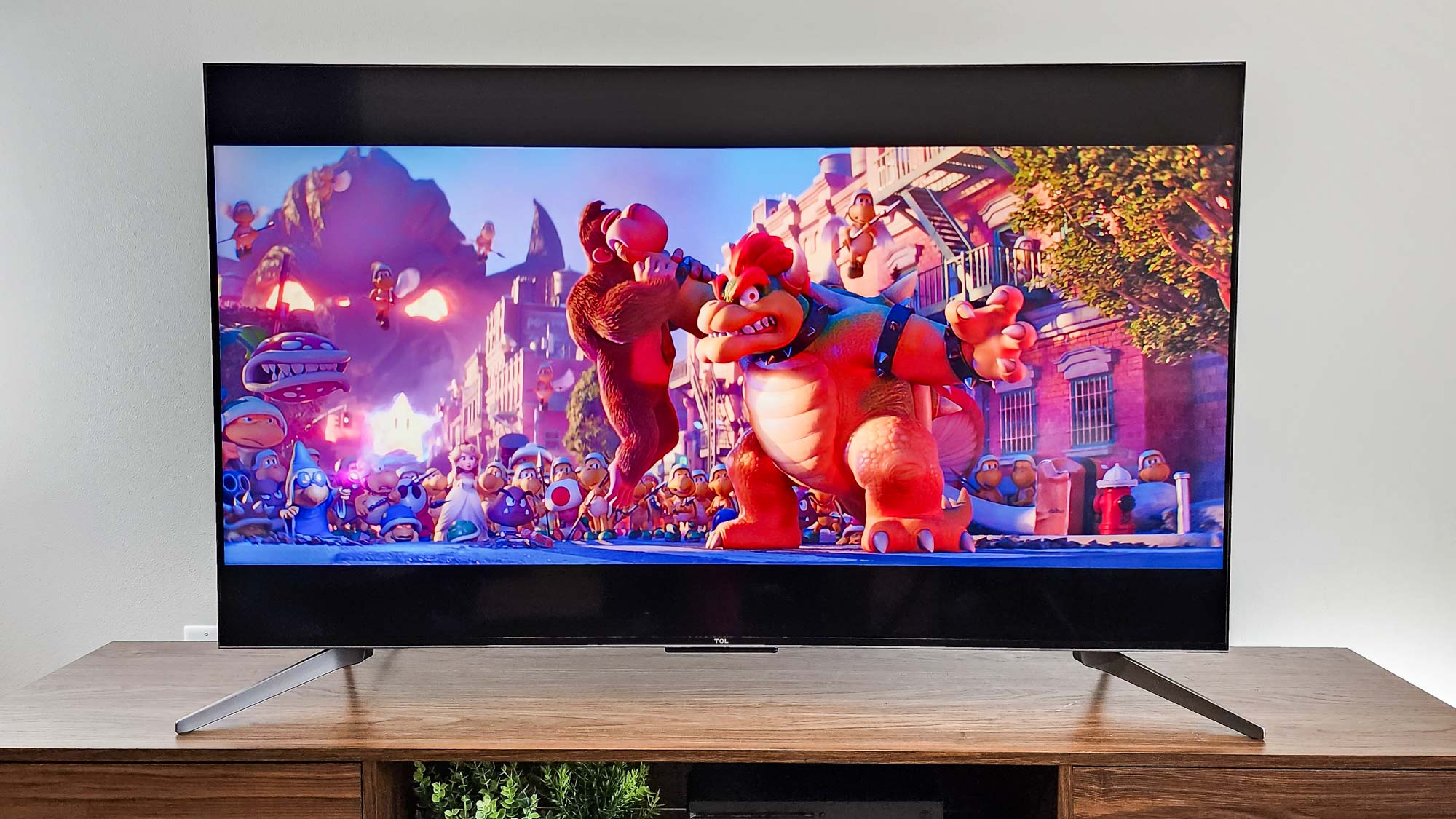
Price: $749.99
Screen size: 55 inches
Model: 55Q750G
Resolution: 3,840x2,160
HDR: HDR10, HDR10+, HLG, Dolby Vision
Refresh Rate: 120Hz
Ports: 2 HDMI 2.1, 2 HDMI 2.0, 1 USB
Audio: 30W
Smart TV Software: Google TV
Size (without stand): 48.2 x 28.2 x 2.8 inches
Weight (without stand): 28.9 pounds
The TCL Q7 proves that a less-expensive TV can still be a bright spot in your home. Literally, in this case: This QLED set, TCL’s midrange QLED offering, delivers terrific brightness in both SDR and HDR, which could go a long way toward making the TV look far pricier than it actually is.
Beyond the brightness levels, the Q7 offers a native 120Hz refresh rate with two HDMI 2.1 ports (one of which can be boosted to 144Hz) and Google TV, one of the best smart TV platforms on the market, and it also handles color well, too.
There are some trade-offs, however. The Q7’s sound and viewing angles both leave something to be desired — and you don’t get a lot in the way of other glittering features that you’d find on any OLED — but the TCL Q7 does what it does well enough that it deserves serious consideration for anyone in the market for a surprisingly bright mid-tier set.
TCL Q7 review: Pricing and availability
The Q7 is available in four different sizes:
- TCL 55Q750G (55 inches): $749.99 | $499.99 on sale
- TCL 65Q750G (65 inches): $999.99 | $649.99 on sale
- TCL 75Q750G (75 inches): $1,399.99 | $899.99 on sale
- TCL 85Q750G (85 inches): $2,199.99 | $1,499.99 on sale
Although we evaluated the 55-inch version of the Q7, because all models are equipped with the same hardware, we expect all sizes to offer similar performance.
TCL Q7 review: Design and features
From the front, the Q7 has a stark but attractive design, with sharp corners that give it an air of refined authority. You can either mount the TV on the wall using the 400x300mm VESA-pattern holes or screw on the included two-piece stand to place it atop an entertainment center.
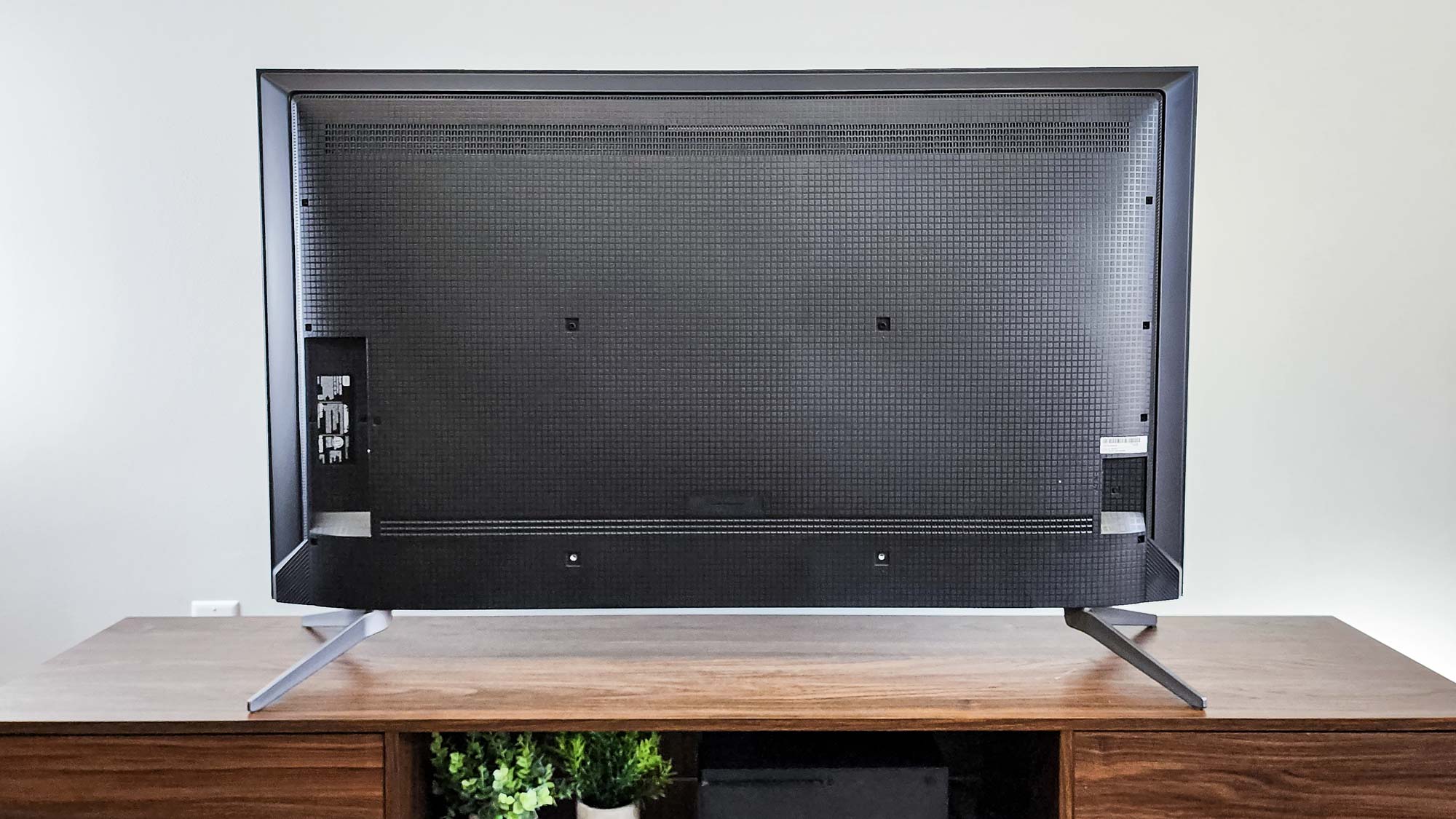
The ports are located on the rear panel with two of the four HDMI ports supporting the newer and more powerful HDMI 2.1 standard, with one allowing for refresh rates up to 120Hz and one up to 144Hz. (See the “Performance and Test Results” section for more about what this means for gaming.)
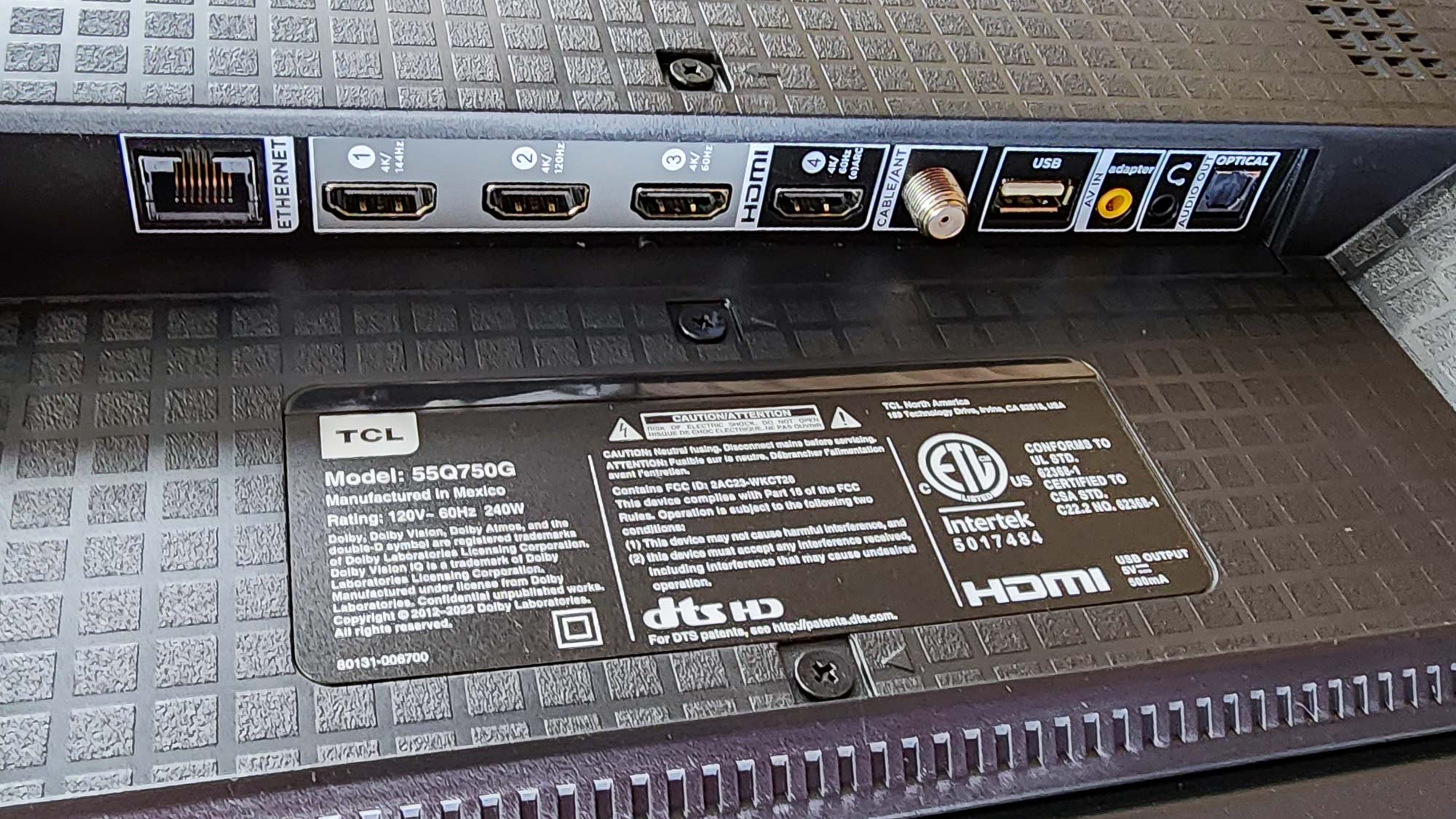
For the Q7’s smart interface, TCL has opted for Google TV, the most powerful and useful on the market. In addition to providing unparalleled ease of navigation, it also ties into your Google Account so you can take advantage of your searches and other information from across all of your Google-connected devices.
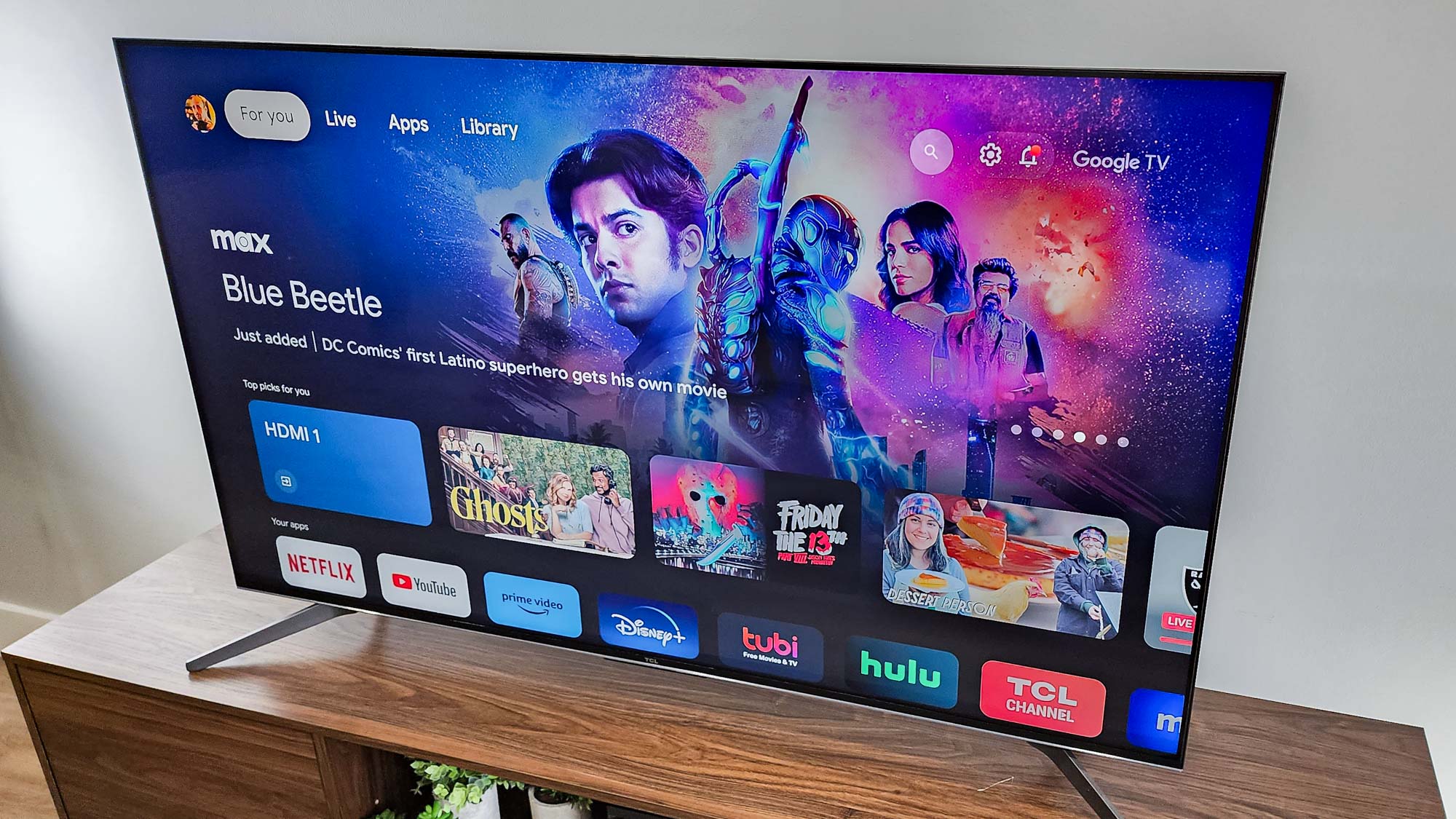
Whereas some TV manufacturers are seriously slimming down their remotes, the Q7’s still looks to be of an older generation size-wise, measuring 8.5 inches in length (with the bottom 2.5 inches or so due to the battery compartment).
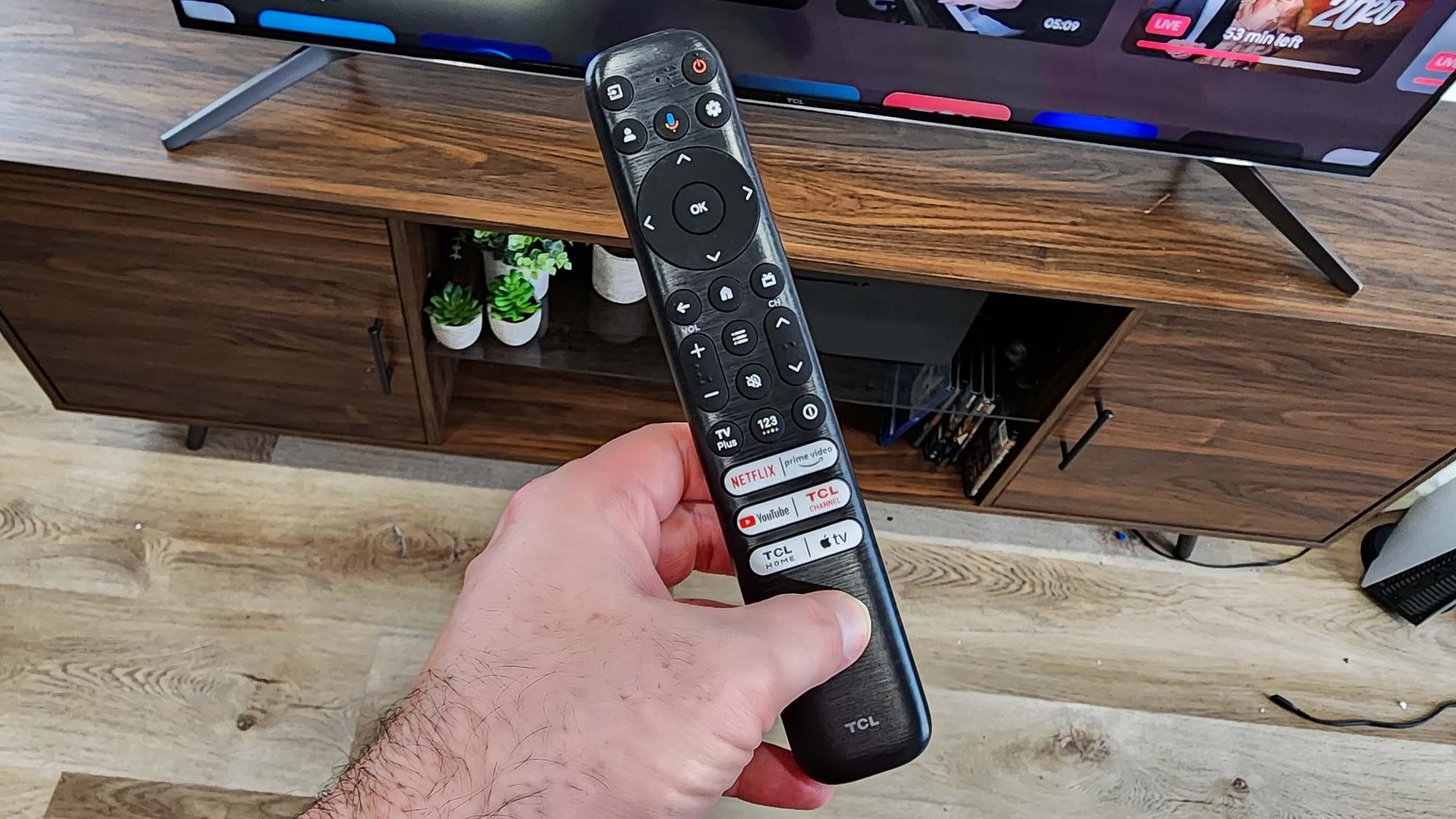
But the buttons are well laid out, all sufficiently large and widely enough spaced to be easy to press under any circumstance. Better still, every single button is backlit.
TCL Q7 review: How we test
For every TV we review at Tom’s Guide, we conduct a series of technical and subjective tests designed to measure the set’s performance. For our technical tests, we use an X-Rite i1 Pro spectrophotometer, a SpectraCal VideoForge Pro pattern generator, and Portrait Displays’ Calman TV-calibration software, and we add a Leo Bodnar 4K Input Lag Tester for measuring the TV’s gaming prowess. Subjective tests vary based on the reviewer, but typically include a diverse selection of movies, TV shows, and other content reflecting the types of things you may actually want to watch on the TV.
For a more detailed look at what we do and how we do it, check out our How we test TVs page.
TCL Q7 review: Performance and test results
Super-bright TVs are rare at lower prices, but the Q7 qualifies based on our tests. In Movie mode (by our judgment, the set’s most accurate), it managed 489 nits with SDR content, and it can get brighter still if you watch in (the less color-accurate) Vivid or Smart HDR modes.
HDR was better still: Again in Movie mode (the closest equivalent to the mode we typically test), it measured 592 nits across 10% of the screen, but we measured up to 821 nits on 50% — and, in the default Low Power mode, 1,044 nits (again at 50%).
If you want a shiningly bright picture, you can get it one way or another, and the full-array local dimming does help reduce light bleed and increase contrast. Other sub-$1,000 sets just don’t get this bright; the Hisense U6K, which is otherwise excellent, could hit only 525 nits in HDR.
As far as color, the Q7’s Delta-E (which relates the difference in color between what’s supplied at the source and what’s on the screen, with lower numbers being better) was a fine 2.3594, and the TV covered a respectable 99.2041% of the Rec. 709 (SDR) color gamut.
With HDR content, it covered 93.38% of the UHDA color gamut (fine for this price) and 71.16% of the Rec. 2020 gamut (ditto, though it robs the set of some future-proofing). In both cases, this was below the Hisense U6K (97.16% and 72.13% respectively), but it’s still good for the category.
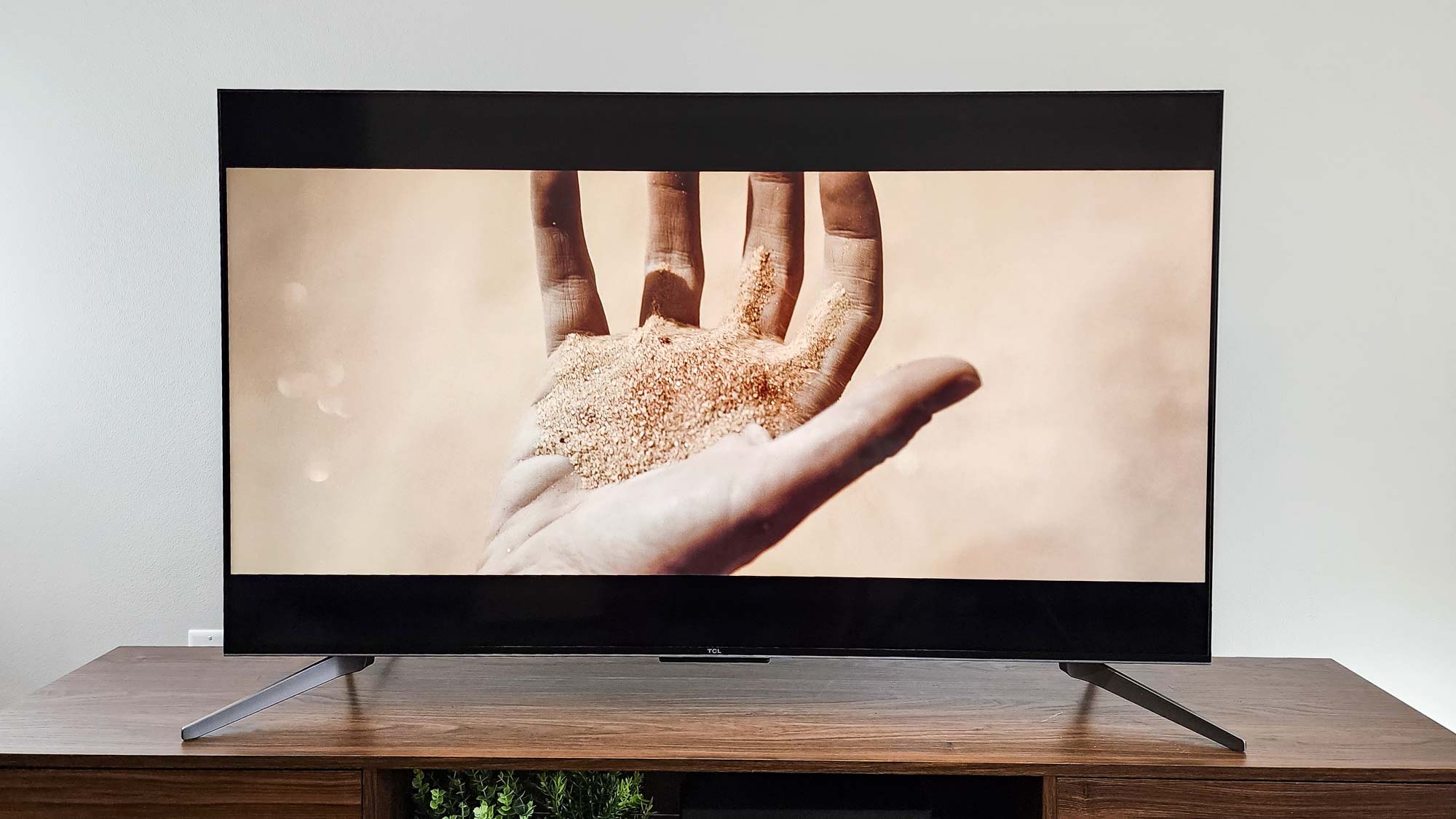
Nearly all the movies we watched on the Q7 looked solid, though movies that could really take advantage of the brightness (such as Denis Villeneuve’s Dune) came off the best, with Avatar: The Way of Water looking unusually crisp and lifelike in its vivid underwater scenes, likely due to a combination of the TV’s picture prowess and its 120Hz panel. More expensive TVs will provide more oomph, of course, but we were never less than pleased with the images we saw from this one given its class.
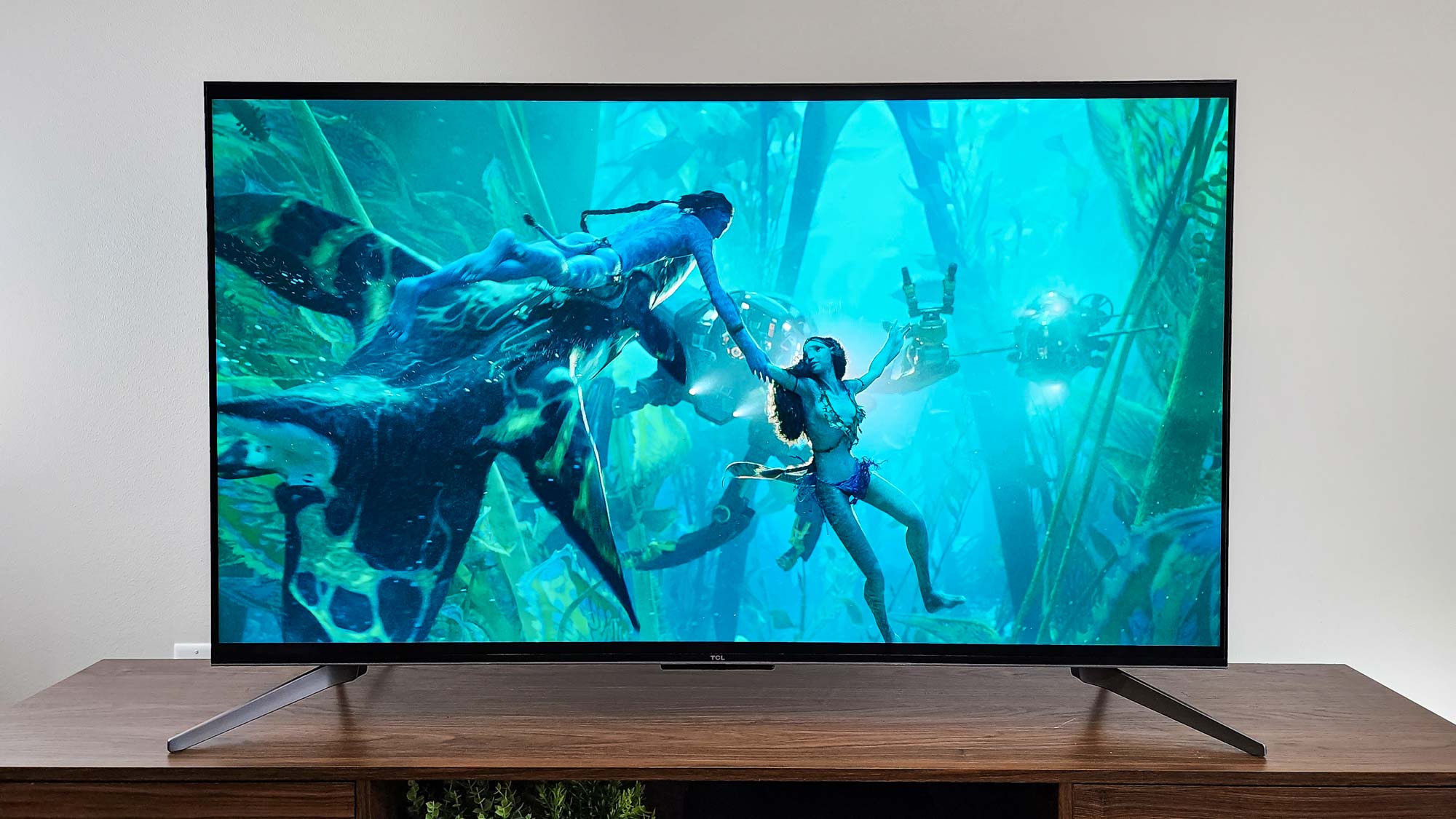
At least, that is, when we viewed the TV straight on. Straying just a couple of inches from the center absolutely torpedoed the color and clarity, so this isn’t one to watch from wide angles around a larger room. You may also want to keep the volume down; it doesn’t so much affect the bass when louder, as it’s practically nonexistent, but distortion creeps in before even the midpoint and trebles get almost unbearably shrill toward the top end of the range.
Those higher-speed HDMI 2.1 ports offer plenty of additional flexibility as far as gaming, giving you access to Variable Refresh Rate (VRR) up to 240Hz and Auto Low-Latency Mode (ALLM) in titles that support them. Input lag could be better — we measured 13.1ms, which isn’t terrible, but not below the 10ms threshold we set for an outstanding gaming experience. Interestingly, though, this result is on par with what we saw from the substantially more expensive TCL QM8.
TCL Q7 review: Verdict
Quantum dot technology filtering down into lower-priced TVs doesn’t always mean you're going to be blown away by the picture you get — we cite the Samsung Q60C as proof to this — but TCL has found a way to make it work on the Q7. For less than $750, and less than $500 if you’re able to find it on sale, the Q7 marshals good color and even better brightness, blowing away plenty of lesser TVs in the process.
We wish it sounded a little better, and even more than most TVs, you’ll want to gather the group tightly around the center of the screen if you want to see it at its best. But otherwise, for a TV that costs this little, the TCL Q7 offers very little to complain about.







